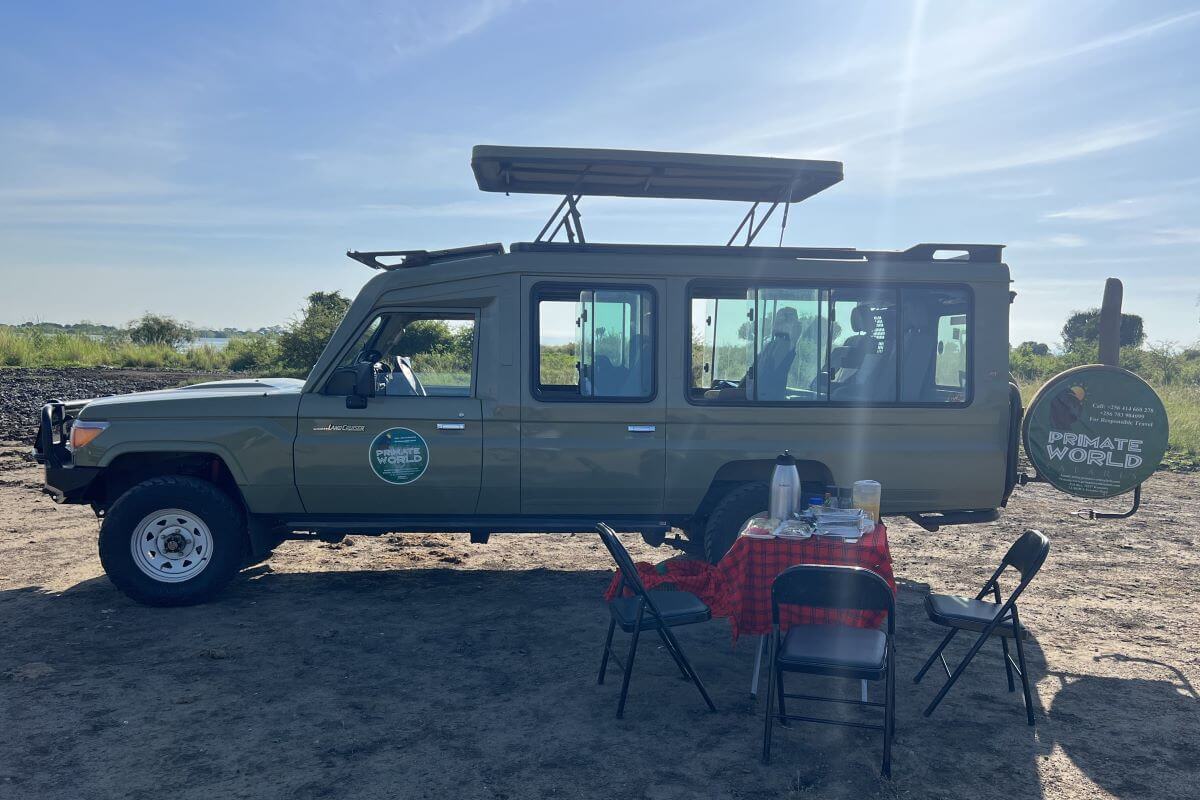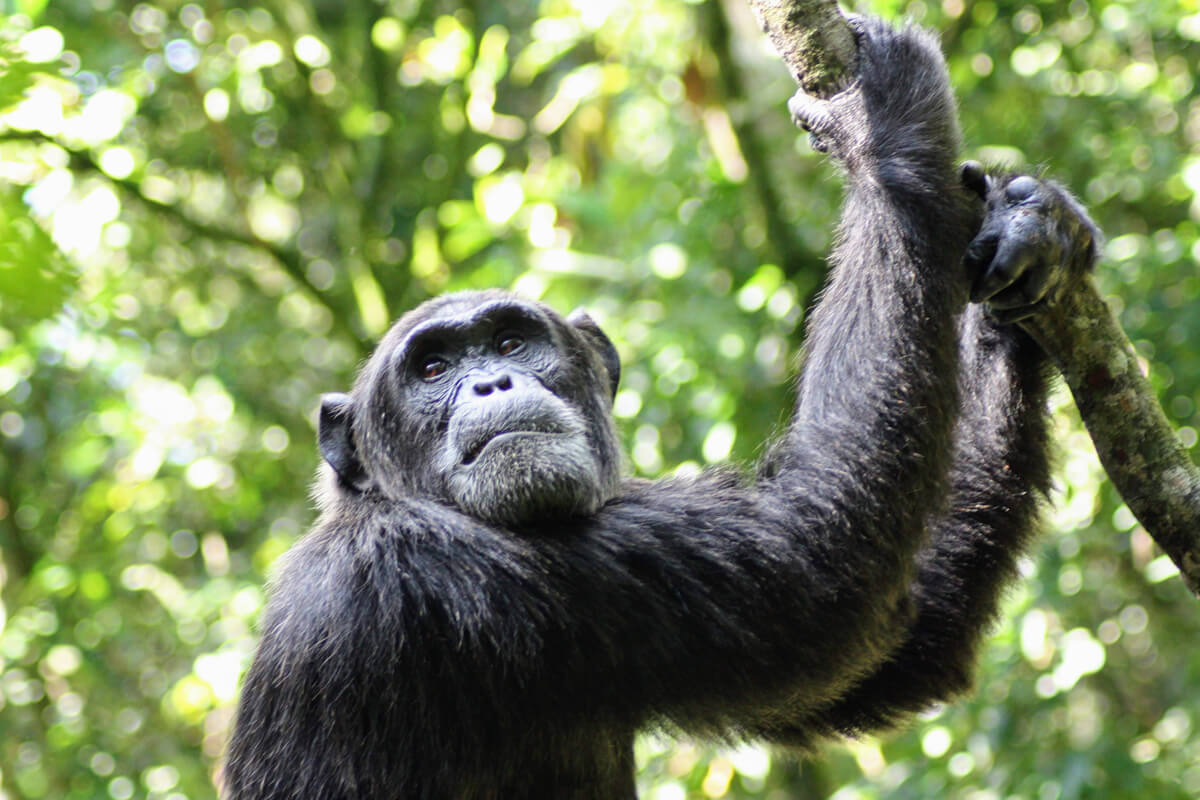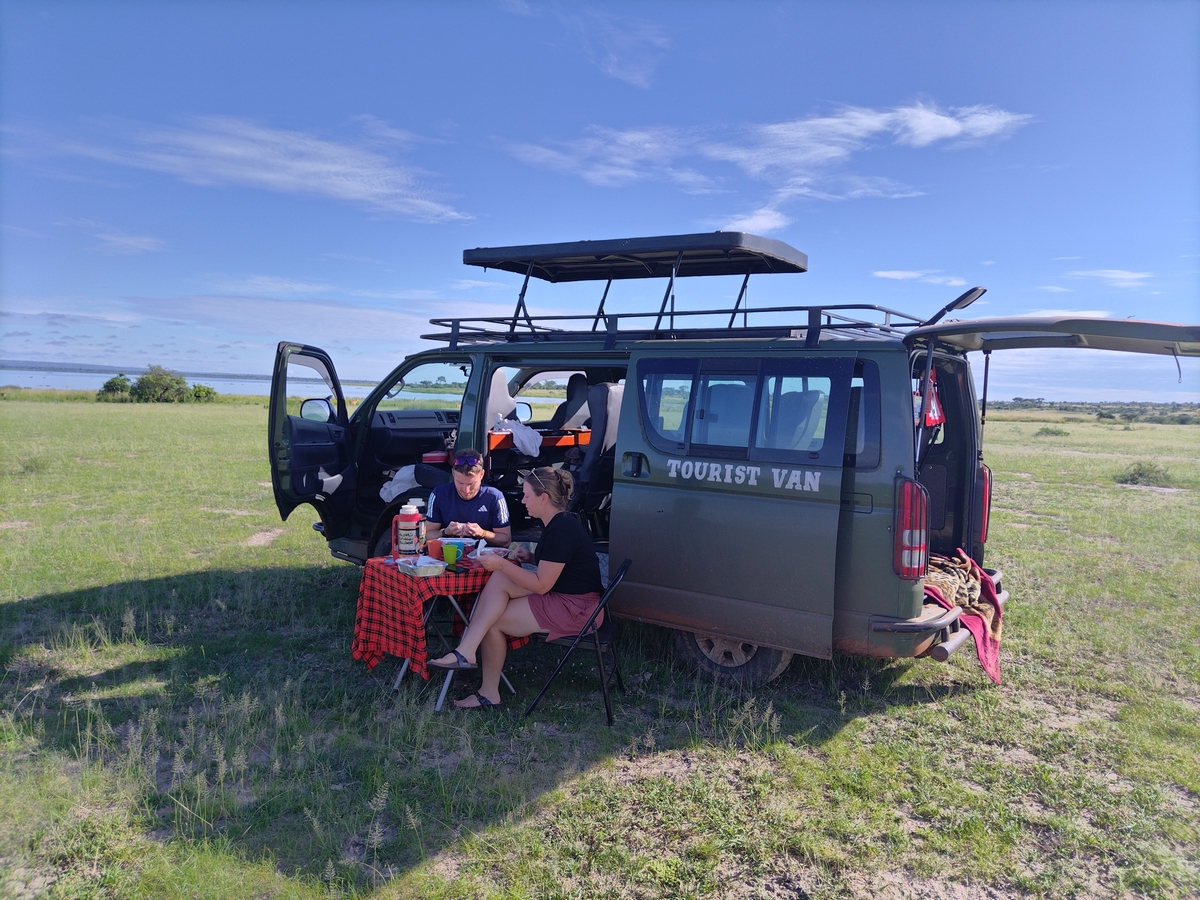How Much Is Chimpanzee Trekking in Budongo? Where Can a Tourist Go for Chimpanzee Tracking in Uganda? How Long Is Chimpanzee Tracking? What Is Chimpanzee Habituation in Budongo Forest?
Budongo Forest is a forest reserve located near Murchison Falls National Park hosting over 350 bird species, 24 mammal species, and 465 plant species. It is home to over 600 chimpanzees, making it one of the best places to see them in their natural habitat in Uganda. The forest is also the largest remaining Mahogany Forest in East Africa, with tall trees growing up to 80 meters.
Chimpanzee Trekking in Budongo is an amazing experience that takes you into the pristine wilderness of the forest to observe the chimpanzees as they go about their daily activities. There are two Trekking sessions that you can go for. One starts at 7:00 am and the other takes place in the afternoon from 3:00 pm.
The Trekking starts at the Kaniyo Pabidi Eco Site, where you will receive a briefing from the guides. They will explain the rules and regulations of chimpanzee Trekking and then assign you to a group of up to eight people that you will track.
The guides will then lead you into the forest, following the trails and signs left by the chimpanzees. These can be footprints, dung, nests, or leftover fruits. The guides will also point out other wildlife and plants that you may encounter along the way.
The time it takes to find the chimpanzees may vary depending on their location and movement. Sometimes they may be near the eco site, while other times they may be deeper in the forest. The guides will communicate with each other using radios to locate them faster.
Once you find them, you will spend one hour watching them feeding, grooming, playing, resting, and communicating with each other. You will also learn about their behavior, ecology, and conservation from the knowledgeable guides.

For your safety and the protection of the Chimpanzees, you are required to follow a few rules along the forest trails.

To track the chimpanzees in Budongo Forest, you need to get a permit which costs $110 per person. This fee only covers the park entrance, the guide, and the trek.
The best time for chimpanzee Trekking in Budongo Forest varies depending on several factors, including weather patterns, chimpanzee behavior, and your preferences.
However, we recommend the dry season (June to September and December to February) as the best time for Chimpanzee Trekking in Budongo Forest.
During this season, the forest floor is less muddy, making trekking easier. Chimpanzees also tend to remain closer to the ground in search of food during this time which increases the likelihood of sightings.
When preparing for Chimpanzee Trekking in Budongo, it’s essential to plan carefully and pack wisely to ensure you have a comfortable and enjoyable experience. Here’s a suggested packing list:
Lightweight and breathable clothing. Avoid bright colors and wear neutral tones to blend in with the surroundings.

Budongo Forest is located around 300 kilometers northwest of Kampala. Budongo can easily be accessed by either road or air travel. You can take a 4-hour scenic drive from Kampala to Budongo Forest Reserve.
If you are already in Murchison Falls National Park, the drive to Budongo takes about 2 hours.
Alternatively, one can take a domestic flight from Entebbe to Murchison Falls National Park which is a shorter drive to Budongo Central Forest Reserve.
There are few lodges in Budongo Forest, however, because of its proximity to Murchison Falls National Park, the accommodation options are many. Since Budongo is often visited as a stopover to and from Murchison Falls National Park, guests often stay at their Murchison Falls hotels/lodges.
The nearby town of Masindi has a wide variety of budget-friendly options.
Budongo is home to over 360 species, from colorful turacos to majestic hornbills. Keep your eyes and ears open as you explore – you never know what feathered friends you might encounter.
You can also take a guided walk along the forest trails and soak in the beauty of Budongo. You will be able to see some ancient trees. Keep an eye out for small animals like bushbucks and duikers. This is the perfect way to relax and connect with nature.
